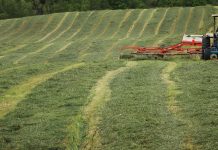“It is my family, and it is my decision if I want to risk making them sick.”
This surprising statement came from a social media post in response to criticism about the author’s food preservation practices. While many stick to the “No one’s gotten sick yet” approach, it may not always stay true.
The truth is, our understanding of foodborne pathogens — those tiny troublemakers that make us sick — has grown, especially since COVID-19 heightened our awareness of how viruses and bacteria evolve.
Even foods we think of as safe, like pickles, can harbor harmful bacteria if not handled correctly.
Pickling for flavor and fun
Quick pickling has become especially trendy, adding a punch of flavor to ethnic dishes and modern “food bowl” recipes. These quick pickles are also great in salads and sandwiches. Our friends at the University of Maine Cooperative Extension share a helpful guide for pickling spring vegetables like asparagus, pea pods, and radishes. You can do a search for refrigerator spring pickles University of Maine Cooperative Extension or check it out here: Refrigerator Spring Pickles (https://extension.umaine.edu/food-health/food-preservation/lets-preserve-refrigerator-spring-pickles/)
But remember quick pickles should be eaten within two weeks. Quick pickling involves flavoring the vegetables over a short period, just two hours to two days. Keep them in the refrigerator while they are pickling. These are different from long-term refrigerator pickles, which many people mistakenly think can be stored for months.
Know the risks
I’ve always loved my grandma’s refrigerator pickles, so I was shocked to learn that listeria was found growing in lab tests of these types of pickles. The USDA now recommends using unprocessed (not canned) pickles within one month. Those popular “floor pickles” and refrigerator recipes floating around online should be consumed much sooner than the six months many claim. And should always be stored in the refrigerator.
If you want to preserve vegetables for longer, use tested recipes for canning or fermenting from the USDA.
Water bath canning. Many people pickle vegetables so they can use a water bath instead of a pressure canner. This is only safe when using tested recipes that ensure the right balance of acid and salt to prevent spoilage. For approved methods, visit the National Center for Home Food Preservation, University of Georgia website: https://nchfp.uga.edu/
You’ll find recipes for cucumber and vegetable pickles, fruit pickles, relishes and chutneys, pickles for special diets and even pickled eggs.
Pickled eggs: A special note. If you’ve stocked up on eggs for spring celebrations, you might enjoy trying pickled egg recipes from the NCHFP, found at nchfp.uga.edu/how/pickle/pickled-eggs/. These include: red beet eggs, sweet and sour eggs, dark and spicy eggs, cidered eggs, dilled eggs and pineapple pickled eggs
Each recipe uses a dozen eggs. But remember—homemade pickled eggs must be refrigerated and used within three to four months. Shelf-stable versions you find in stores are commercially processed with additional safety measures.
Pickling tips to remember
Always use vinegar with 5% acidity. Many specialty vinegars fall short of this. Don’t use salad cucumbers for pickling. Slice off 1/16-inch from the blossom end to prevent spoilage.
Pickling salt is your friend. It dissolves easily and won’t settle at the bottom of jars like table salt.
Your local Extension office has access to food safety professionals to answer your food preservation questions.
The bottom line
Different types of pickles have different storage times, depending on how they were made. Pickles are a flavorful way to enjoy seasonal produce, but safety comes first. Enjoy the bounty of spring, experiment with pickling, and protect your family’s health by following trusted, tested methods.















